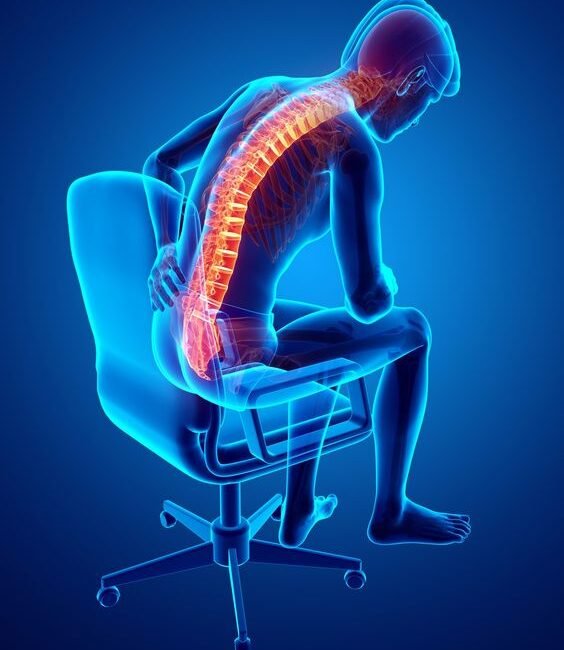
Introduction
Chronic lower back pain has been identified as one of the leading reasons for long-standing disability worldwide. It has typically been termed as pain that continues for over 12 weeks despite having treated the initial cause or injury. The pain of chronic back pain ranges from mild to severe, and interference in daily life has been well documented. Most individuals suffer from one-time and chronic lower back pain without the knowledge of the exact cause and remedy.
Aspadol 100mg: A Trustworthy Option for Pain Relief
The management of chronic pain has historically involved the use of medically prescribed drugs when other treatments do not provide long-lasting relief. Aspadol 100mg, a drug that carries the active ingredient Tapentadol, has been widely prescribed for moderate and severe chronic lower back pain. Tapentadol functions by modifying the perception of pain in the body, and dual-action mechanisms with opioid receptor activation and norepinephrine reuptake inhibition have been demonstrated. As a central analgesic, it is indicated when non-opioid options fail.
This drug is typically administered under the observation of a medical practitioner. Dosage and rate are varied according to the patient’s pain level and personal reaction. Dizziness, nausea, or drowsiness can be side effects and need to be closely observed. Its use with other central nervous system depressants is not recommended unless by a physician.
Causes of Chronic Lower Back Pain
A broad range of causes have been established with chronic lower back pain. The source of the pain can be mechanical, inflammatory, or degenerative. In a lot of instances, the pain built up gradually over time as opposed to being caused by an incident.
1. Muscle or Ligament Strain
Repetitive lifting, sudden movements, or persistent poor posture have caused strain to spinal ligaments and back muscles. Repeated strain has been reported to lead to spasms and chronic pain.
2. Ruptured or Bulging Discs
Discs are cushions between the vertebrae. Herniated or bulging discs can compress nerves and result in chronic pain. Imaging studies like MRI or CT scans are usually required to verify such conditions.
3. Arthritis and Degenerative Disc Disease
Osteoarthritis has been found to occur in the lower back in older individuals. Spinal stenosis—spinal narrowing around the spinal cord—may happen over time. Degenerative disc disease has also occurred when discs dehydrate and lose flexibility, resulting in pain.
4. Skeletal Irregularities
Conditions like scoliosis, which results in curvature of the spine, have been described as causes of chronic lower back pain in certain individuals. Such abnormalities have a tendency to put uneven stress on the spinal column.
5. Infections and Tumors
Infections of the spine and spinal tumors, though less frequent, have also been determined to be sources of chronic lower back pain. These conditions need intense diagnostic evaluation.
Symptoms of Chronic Lower Back Pain
Symptoms have been quite varied but mainly comprise of a dull or burning pain in the lower back, stiffness, pain when standing or walking for long periods, and poor flexibility. The pain will sometimes be radiated to the legs or followed by tingling and numbness, particularly when nerves are affected. One should see a healthcare provider if the symptoms do not improve or deteriorate.
Successful Remedies and Treatment Options
A number of therapies and treatment strategies have been used for the treatment of chronic lower back pain. An individualized treatment has been deemed necessary.
1. Physical Therapy
Strengthening exercises for core muscles, posture improvement, and flexibility enhancement have been implemented in most treatment protocols. These routines have been provided by physical therapists and remodeled according to fluctuating pain levels.
2. Pain Medications
NSAIDs like ibuprofen or naproxen have been used extensively. Prescription pain relievers like Aspadol 100mg were prescribed in cases that are moderate to severe. These drugs give relief for a short term and enable patients to undergo physical therapy or normal day-to-day activities.
3. Cold and Heat Therapy
Alternating between hot and cold compresses has proven to decrease inflammation and ease muscle tension. This treatment is recommended widely as a preliminary home-care treatment.
4. Lifestyle Changes
Weight reduction, consistent stretching, workplace ergonomic changes, and smoking cessation have been highly recommended. These changes have lessened stress on the spine and aided in preventing flare-ups.
5. Massage and Acupuncture
Therapeutic massage and acupuncture have been applied to help relieve pain and enhance circulation. Favorable outcomes have been noted in some subjects as part of an integrated pain management plan.
6. Cognitive Behavioral Therapy (CBT)
CBT has assisted in enabling patients to adapt to the psychologic stress of chronic pain. It has been particularly useful when pain is complicated by anxiety or depression.
7. Surgical Treatment
Surgery was only undertaken when other forms of treatment have failed and a known structural problem is diagnosed. Spinal fusion or discectomy procedures have been applied in selected circumstances.
Monitoring and Prevention
Regular follow-ups, early treatment, and adherence to recommended treatments have been linked to improved outcomes. Recurrence of lower back pain has been averted using regular core strengthening exercises, proper lifting procedures, and healthy posture practices. Protracted bed rest has been avoided, as it can exacerbate the situation.
Conclusion
Chronic lower back pain remains a multifactorial condition with a number of contributing factors. While the causes can differ, the proper mix of medical, physical, and behavioral treatments has frequently resulted in substantial relief. Aspadol 100mg, among other medications, coupled with treatments and lifestyle adjustments, has been a mainstay in managing chronic pain. Individualized and multidisciplinary treatment has continued to be the most optimal route to recovery.


